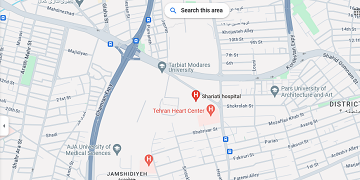Bone tissue engineering using endometrial mesenchymal stem cells along with osteoblast drived exosomes on polycaprolactone scaffold with collagen by 3D printing method
Summary of the necessity of project implementation
Anatomy of the skull and face is very specialized and individual, and although it is vitally important in terms of function and beauty, it is prone to genetic and environmental damage. Usually, in one third of all live births that are affected by a minor or major malformation, the bones of the head and face are involved. On the other hand, the head and face are also usually affected by cancer and trauma. Therefore, from a clinical point of view, there will be a situation in which the amount of bone that is necessary to restore the shape and function exceeds either the patient's recovery capacity or the inherent regeneration abilities of the bone. In fact, bone is a tissue with self-healing ability, but when a large bone defect, which is also known as a critical size defect, is created, it cannot be treated by the patient's body. The zygoma bone is also one of the most vulnerable facial bones due to its prominence and location, whose initial ideal reconstruction is not always achieved, especially in situations such as post-traumatic injuries and interpersonal violence, road accidents, Falls and sports injuries and cancer and complications of secondary deformities that create significant challenges even for experienced surgeons. Fracture treatments in the zygomatic complex generally include conservative and surgical treatments, which in most patients with severe fractures, in addition to incurring high costs, also have various degrees of postoperative complications such as facial asymmetry, enophthalmos and problems Eyesight and limitation in opening the mouth and asymmetry of both sides of the face are observed. Therefore, the management of complex zygomatic fractures is still a challenge for surgeons. Bone grafting with allograft and autograft has proven to be a useful tool in the reconstruction of jaw bone defects, but the shortage of donor organs and extensive hospitalization and long recovery periods with delayed functional rehabilitation often lead to an increasing need for alternative options for flaps. It has created a free bone. Also, ready-made implants made of different materials are also used to reconstruct jaw and facial defects, however, these ready-made implants require secondary processing before implantation according to the anatomical structure of the patient. Therefore, in order to overcome this, patient-specific implants have recently been made using 3D printing technology, and since the implants developed by 3D printing technology are customized, they will not need secondary processing, and as a result, they can Connect quickly. Therefore, limitations in the volume and quality of available donor tissue and considerations related to surgical time, cost, discomfort, and postoperative complications have driven efforts to search for better treatment options. These efforts include tissue engineering and biomaterials strategies to construct a load-bearing matrix at the defect site that is also capable of providing a bioactive scaffold for cell adhesion, proliferation, differentiation, and target tissue formation. Hence, with the continuous advancement of tissue engineering and stem cell technologies, the use of regenerative strategies has accelerated among many research groups worldwide.
Moderator: Dr. Naghmeh Bahrami
Start year: 2021




Send to friends